Photos by Peter.
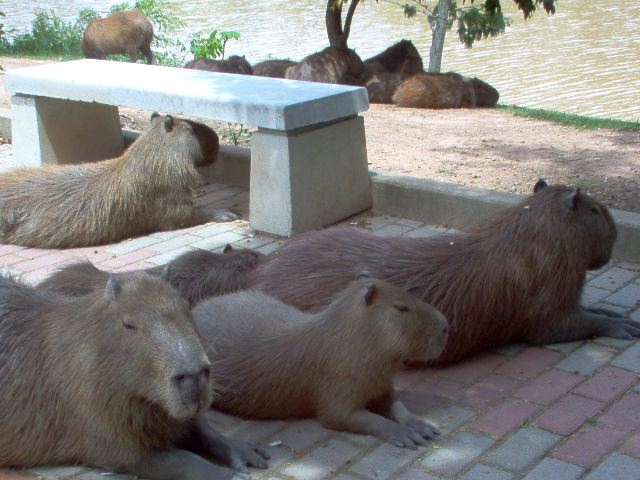
The capybara (Hydrochoerus hydrochaeris) is the largest rodent in the world, followed by the beaver, porcupine, and mara. Its closest relatives are guinea pigs and rock cavies, and it is more distantly related to the agouti, chinchillas, and the coypu. (Source:Wikipedia)
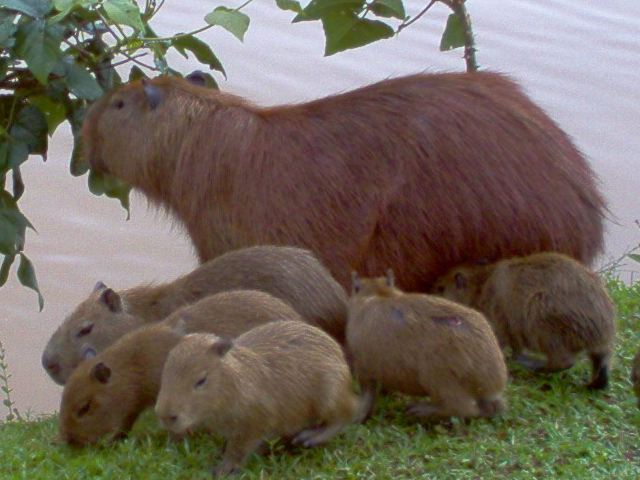
Native to South America, the capybara (capivara in Brasil) inhabits savannas and dense forests and lives near bodies of water. It is a highly social species and can be found in groups as large as 100 individuals, but usually lives in groups of 10 to 20 individuals. (Source:Wikipedia)
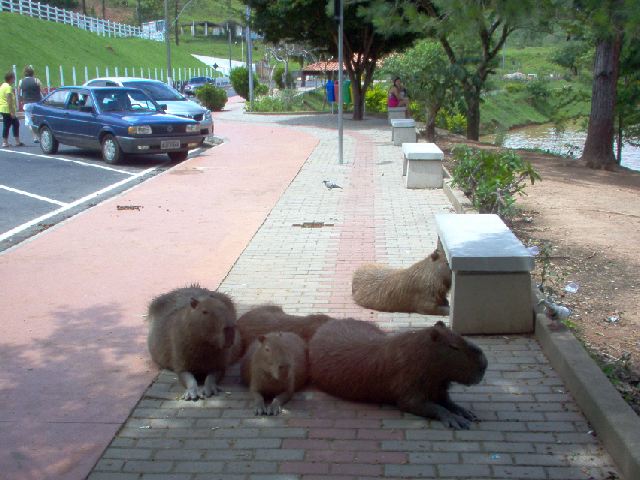
The capybara is not a threatened species, though it is hunted for its meat and hide and also for a grease from its thick fatty skin which is used in the pharmaceutical trade.(Source:Wikipedia)
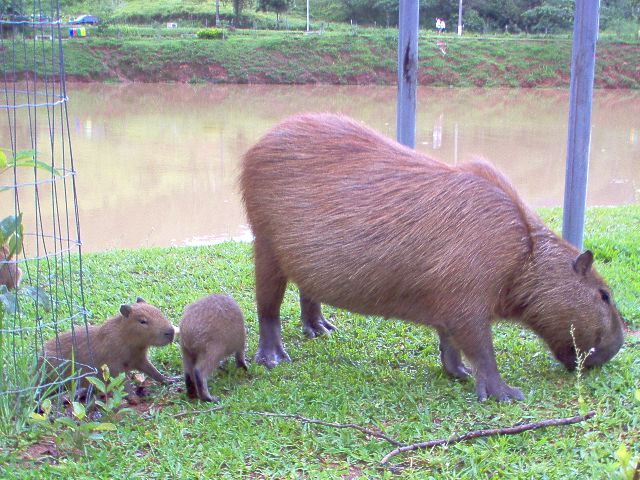
Adult capybaras grow to 107 to 134 cm (3.51 to 4.40 ft) in length, stand 50 to 64 cm (20 to 25 in) tall at the withers, and typically weigh 35 to 66 kg (77 to 150 lb), with an average in the Venezuelan llanos of 48.9 kg (108 lb). The top recorded weights are 91 kg (200 lb) for a wild female from Brazil and 73.5 kg (162 lb) for a wild male from Uruguay. (Source:Wikipedia)
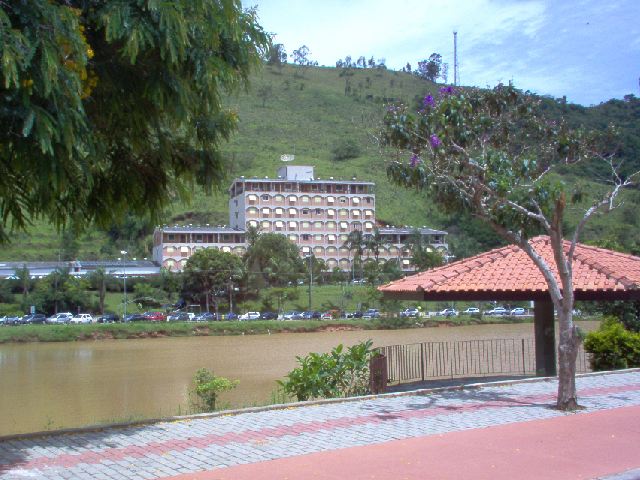
Condomínio Cavalinho Branco - Little White Horse Condominium
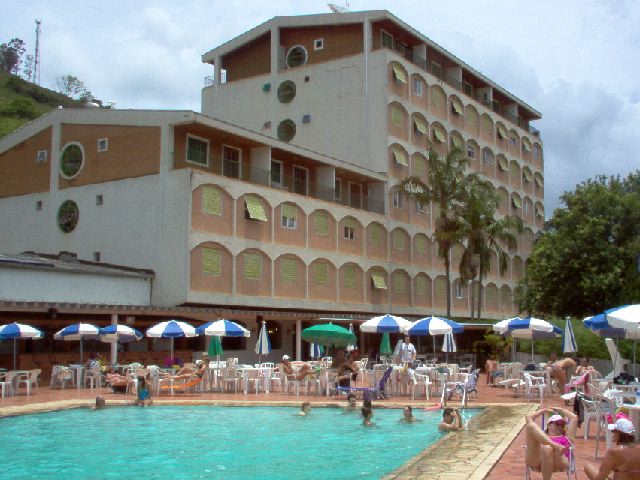
Condomínio Cavalinho Branco - Little White Horse Condominium
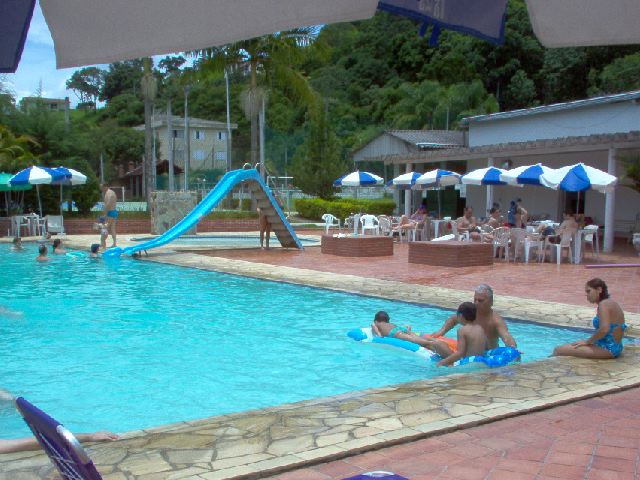
Condomínio Cavalinho Branco - Little White Horse Condominium
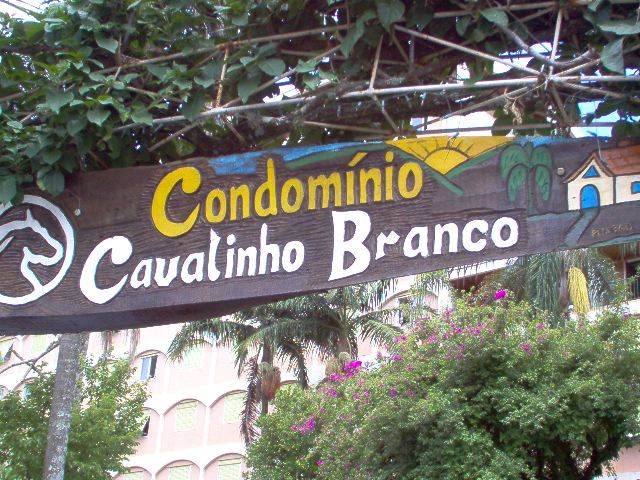
Condomínio Cavalinho Branco - Little White Horse Condominium
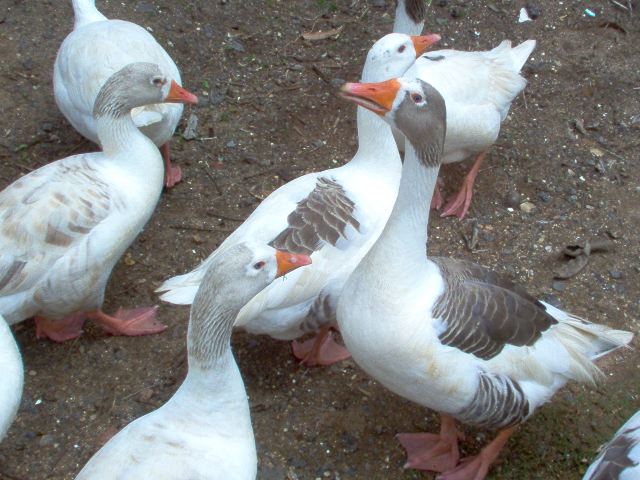
A small flock of geese roam around the lake with the capivara.
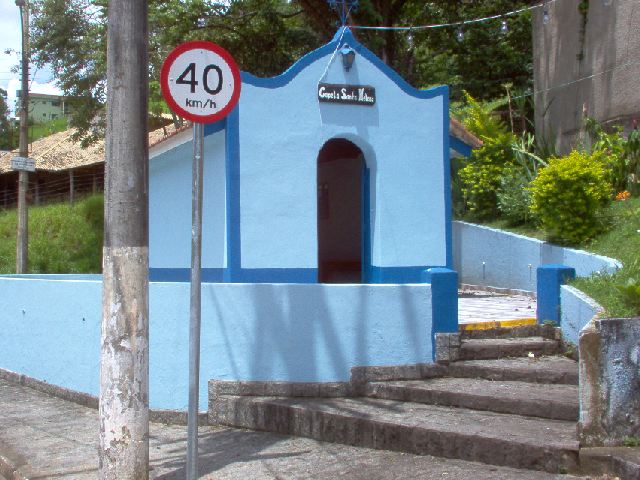
Small Chapel.
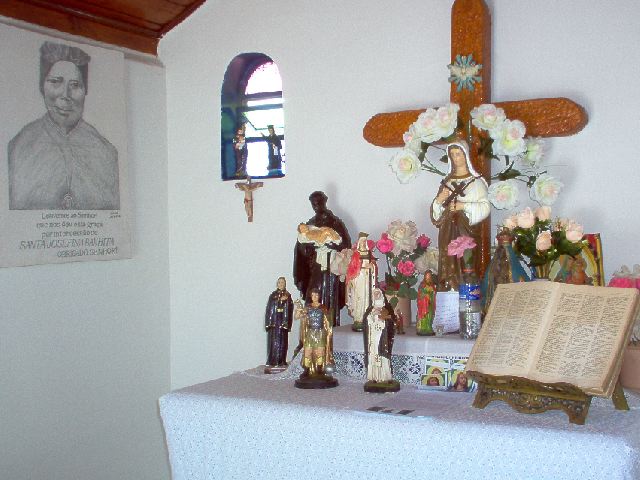
Small Chapel interior.
Back to the top of the page.
Back to Travel and Dive Photographs.